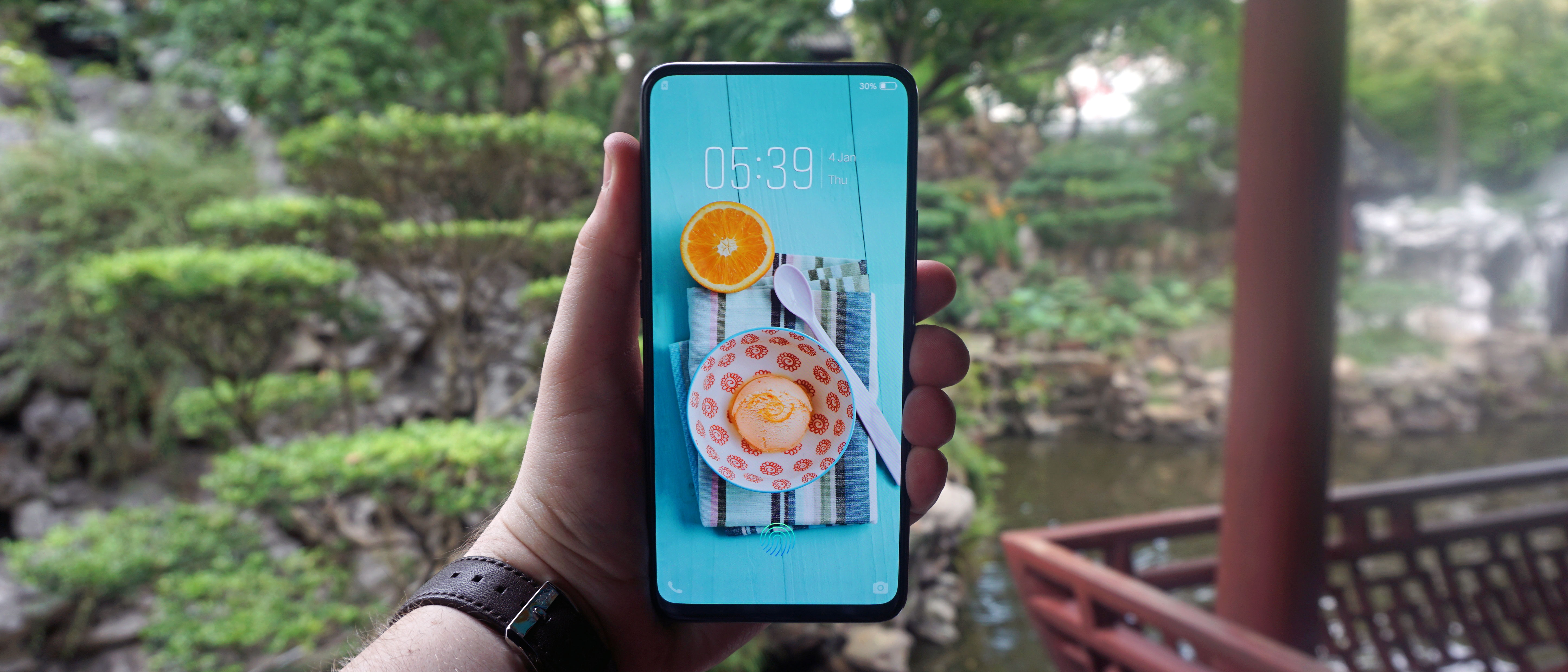Early Verdict
The Vivo Nex does a lot differently, and it’s an exciting looking phone for that reason. It’s currently only confirmed to be available in China, but if it launches around the rest of the world it will be big competition for the likes of Samsung and Apple.
Pros
- +
Innovative bezel-less design
- +
In-display fingerprint sensor
Cons
- -
No wireless charging
- -
No microSD, but you probably won’t need it
Why you can trust TechRadar
You may not have heard of Vivo before, but the Chinese company has just announced one of the most exciting phones we've seen, in the form of the Vivo Nex.
The flagship device from Vivo comes packed with a variety of next generation features that have allowed Vivo to get as close to a bezel-less phone as we’ve seen before.
It has an in-display fingerprint scanner (which Vivo claims is more accurate than ever) as well as a pop-up selfie camera and a few other tweaks, alongside some top of the range internal tech to make this one of the most exciting devices we’ve seen launch in 2018.
Update: There are actually three variants of the handset Vivo is calling "Nex". The one we've been hands on with is the top-of-the-line Vivo Nex S, which boasts a Snapdragon 845 chipset, 8GB of RAM, an in-display fingerprint scanner and 256GB of storage.
There is a second variant of the Nex S, with the only difference being 128GB of storage.
Finally, there's the Vivo Nex A, which has a lesser Snapdragon 770 chipset, 6GB of RAM and a rear fingerprint scanner rather than one built into the screen.
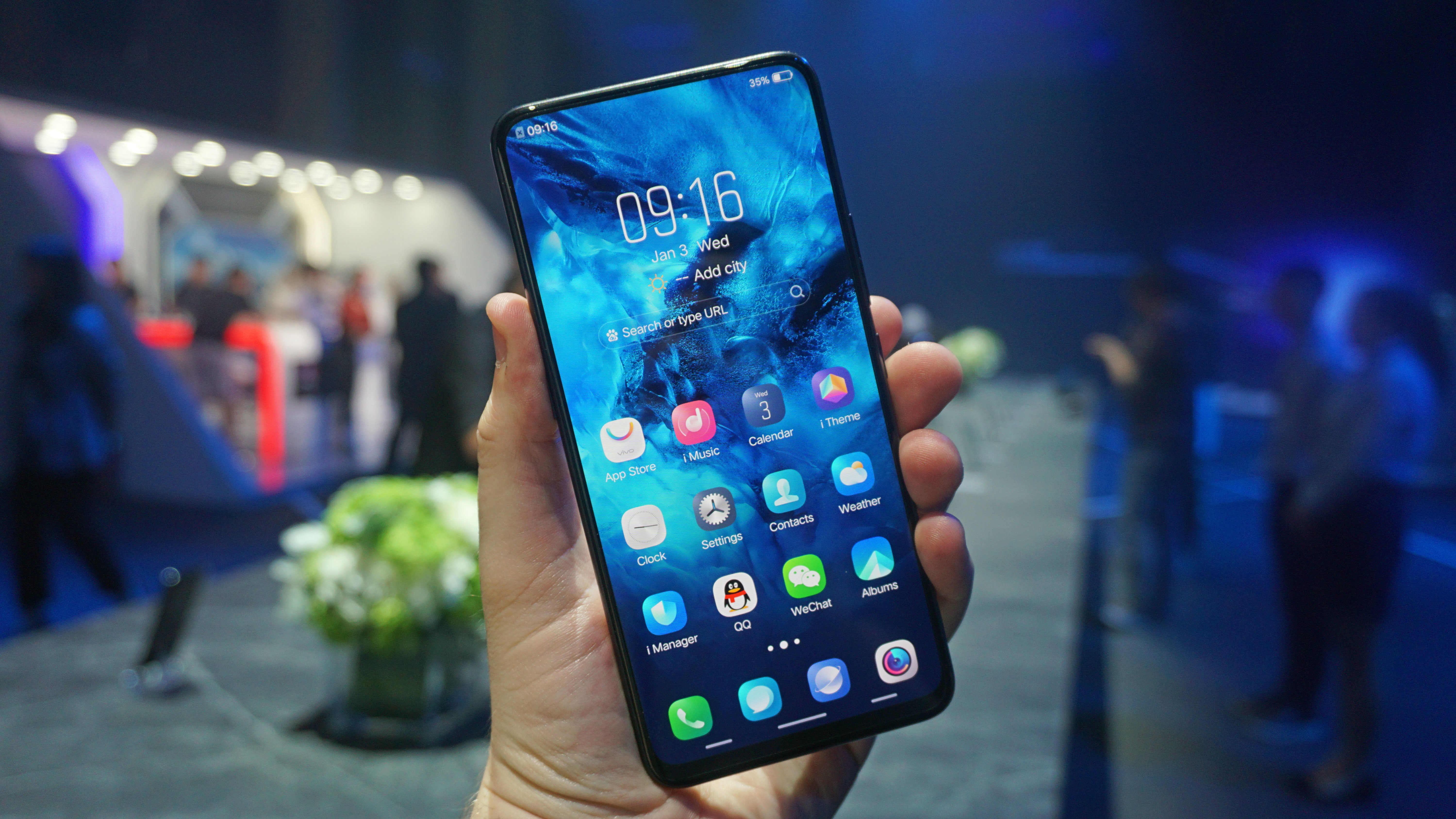
Vivo Nex price and release date
The bad news to start - this phone is currently only set to launch in China. It may in the future come to other markets around the world, but right now Vivo is only confirming a Chinese release for the Vivo Nex where it is out now.
The price is set at 4998 yuan (about $780, £600, AU$1050) for the 256GB version, while the 128GB version costs 4498 yuan (about $700, £530, AU$950). Vivo may change the price if it comes to other markets around the world though.
Design and display
The last 12 months in phone design have been about slimming down the bezels further than ever, opting for 18:9 aspect ratio displays and including a notch at the top of the screen to hide away the important tech, but Vivo hasn’t done that.
You have to applaud Vivo for not following the crowd and including a notch on its 'bezel-less' phone, as instead it’s opted for a variety of new technology to achieve an incredible 91.24% screen-to-body ratio.
So, that’s not totally bezel-free like some marketing would have you believe about this phone. There’s a very slim chin at the bottom of the phone as well as a faint bezel around the outside, but it’s still remarkable how little bezel there is.

To be able to make that happen, Vivo has used three different technologies. The first is a pop-up selfie camera that is in the top left edge of the phone.
Once you boot up the selfie mode, you’ll be greeted by the little camera mechanically jumping up so you can take your shot.
If you then exit the camera app or switch back to the main camera, it will drop back down in about 2 seconds. It’s a novelty to play around with the little camera at the moment, watching it jump up.
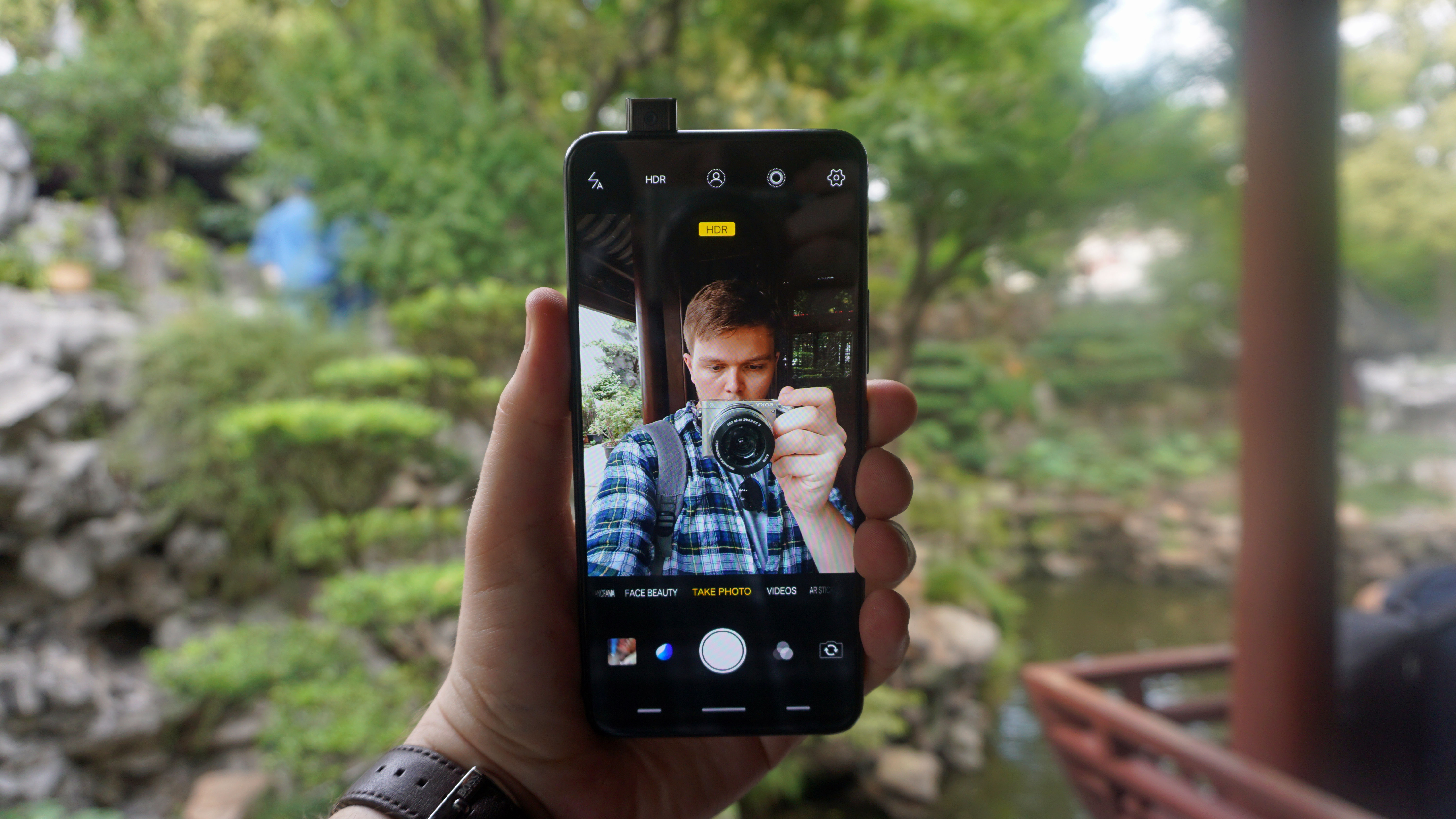
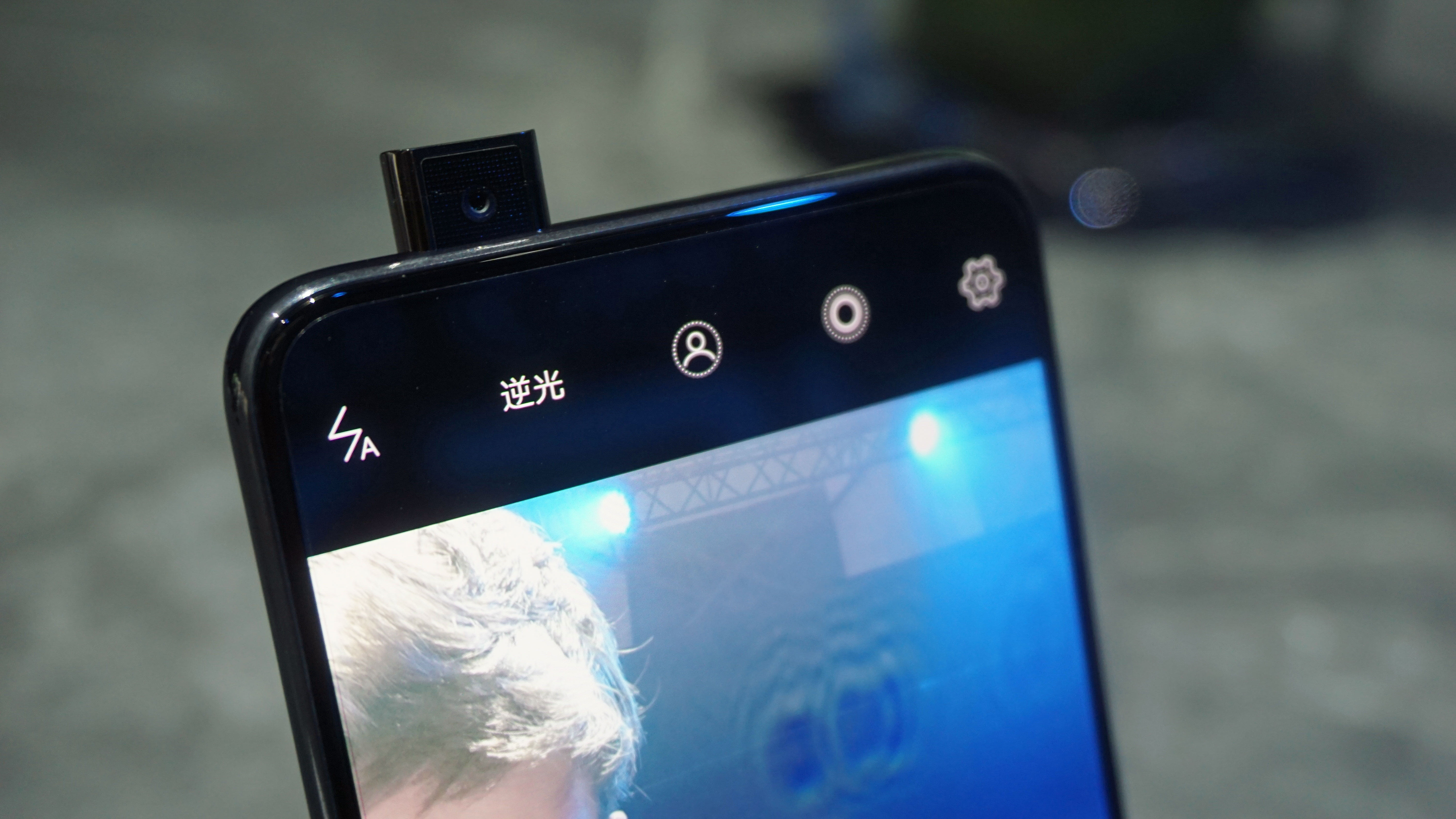
We were a little worried it would take too long to start up for when you want to take a quick selfie, but once you’ve switched the camera to selfie mode it takes less than 2 seconds and so far we haven’t found ourselves frustrated with that speed.
Because of the selfie camera hiding inside the phone, there's no face scanner on the Vivo Nex like we've seen on a lot of modern flagship phones announced in 2018.
Can't stop playing the sound effect on the Vivo Nex selfie camera... such a simple thing #VivoNEX pic.twitter.com/JAc2dfutXQJune 14, 2018
Next to the selfie camera there's a 3.5mm headphone jack, while the bottom edge of the phone features the USB-C charging port and a single speaker for listening to general audio.
The second innovation involves the earpiece speaker, which you use to hear the other end of the line in a phone conversation. Where other smartphones have a hole for this in the body of the phone, Vivo has instead built the earpiece into the display itself.
This is achieved using a technology called Screen SoundCasting and it works in a similar way to bone conduction technology. It means you can place any part of the screen to your ear during a phone call, and Vivo claims this should offer better sound quality in phone calls too.
Whether that will improve the quality of phone calls in loud environments or other areas remains to be seen, but we’ll be sure to test this further in the future.
The third technology is including an in-display fingerprint sensor. This isn’t the first phone we’ve seen come to market with in-display security tech, but it’s still a novelty to just place your finger on the screen and watch it work its authentication magic.

For the Vivo Nex, you can only place your finger or thumb in a specific area on the screen. There’s a little icon to show you where to place it, and so far in our very limited testing we’ve found it to work speedily. We'll need to test it further to see just how accurate it is, but Vivo recommends it as the primary way to unlock the phone.
Including those three technologies has allowed the company to rid the front of the phone of the notch or a large chin at the bottom, and while this doesn’t have quite such a high screen-to-body ratio as the Vivo concept phone we saw at MWC 2018, it’s still stunning when you first power the screen on.
The display itself is only Full HD+, which when you study the pixels when watching video is noticeable, but it’s an AMOLED display so the colors are vibrant.
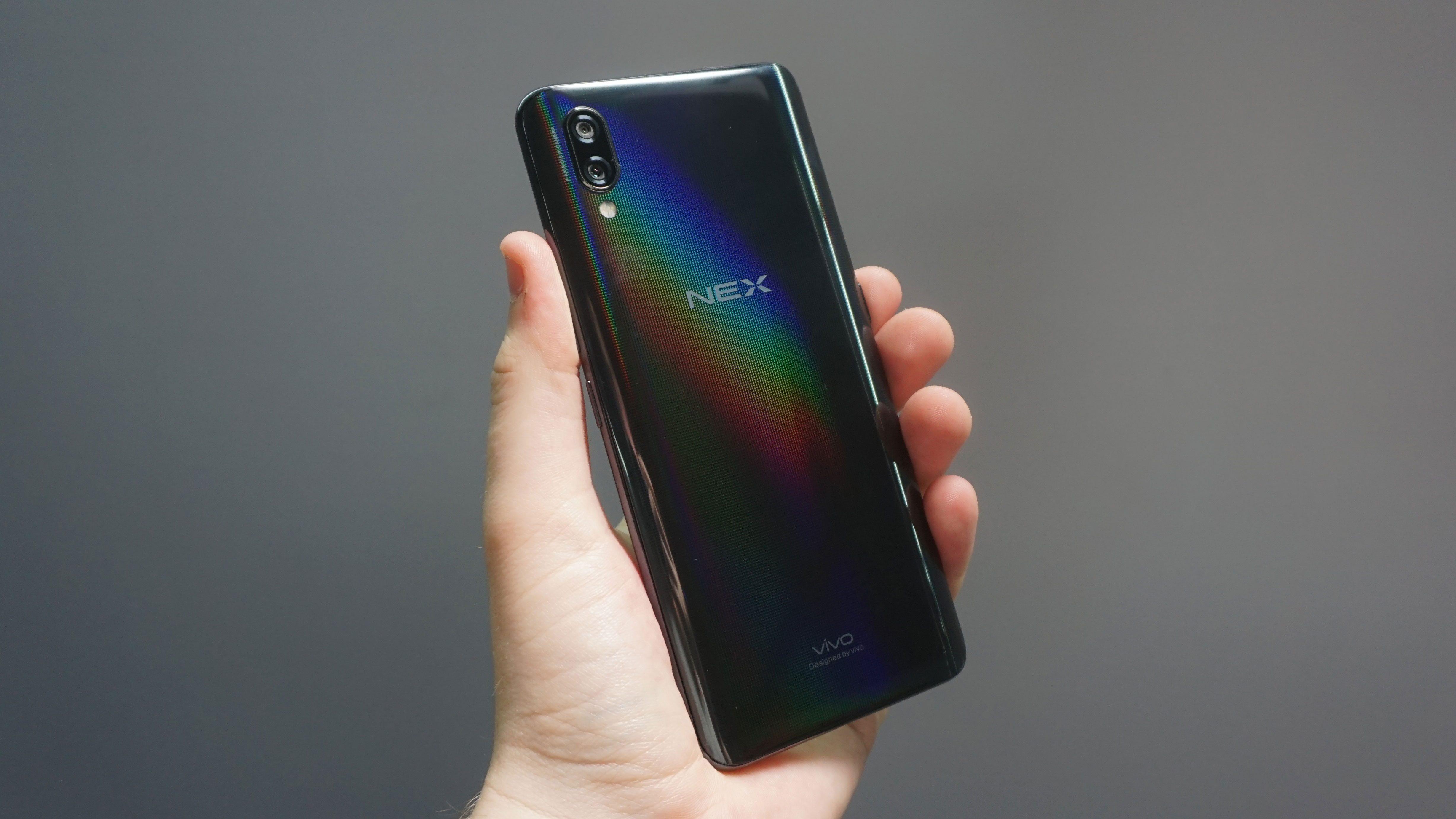
The design of the phone includes a glass back with curved edges, which means it sits quite comfortably in the hand. We don't currently know if it has Gorilla Glass protection or not. This is a large phone, but considering it has an almost 6.6-inch display it’s very easy to hold in one hand.
At a weight of 199g it’s not the lightest device on the market, but considering its size this will be about the weight you’d expect from a phone like this. It's also worth noting the phone isn't waterproof or dustproof, so you won't want to drop this in a sink full of water.
Specs and features
Inside the Vivo Nex there's a top-end Qualcomm Snapdragon 845 chipset, which is the same as we’ve seen in a number of flagship devices this year and we hope to see it perform well in this Vivo device too.
It should do, as it’s paired with 8GB of RAM. In our couple of hours of testing, apps loaded quickly and moving around throughout the UI was snappy, so we have high hopes for what the phone will be able to achieve.
Storage-wise you may be disappointed to hear there’s no microSD card slot, but instead the company has included 256GB of storage on the phone as the standard amount, so most buyers should have more than enough space.

The phone we've tested is running a specific OS for the Chinese market, which means it currently doesn't have access to a lot of Android specific services like the Google Play Store.
If it does come out in other countries, we'd expect Vivo to rework the operating system on the phone for that release.
Battery and camera
Vivo has opted for a 4,000mAh cell inside the Nex, which is large but may still struggle considering how much screen this phone has to be powering whenever it’s turned on. We’ll be sure to test its life at a later date.
Despite the glass back, Vivo hasn’t included wireless charging technology in this phone, but it does at least support fast charging.
When it comes to cameras, we’ve already spoken about the innovative selfie idea where it comes up from inside the phone. The quality of selfies has been okay in our testing, with it being an 8MP sensor with an aperture of f/2.0.
This won’t give you those stunning selfie shots that you can see from some phones, but the novelty alone of it coming up from inside the Vivo Nex is sure to encourage you to boot up the front camera more often.
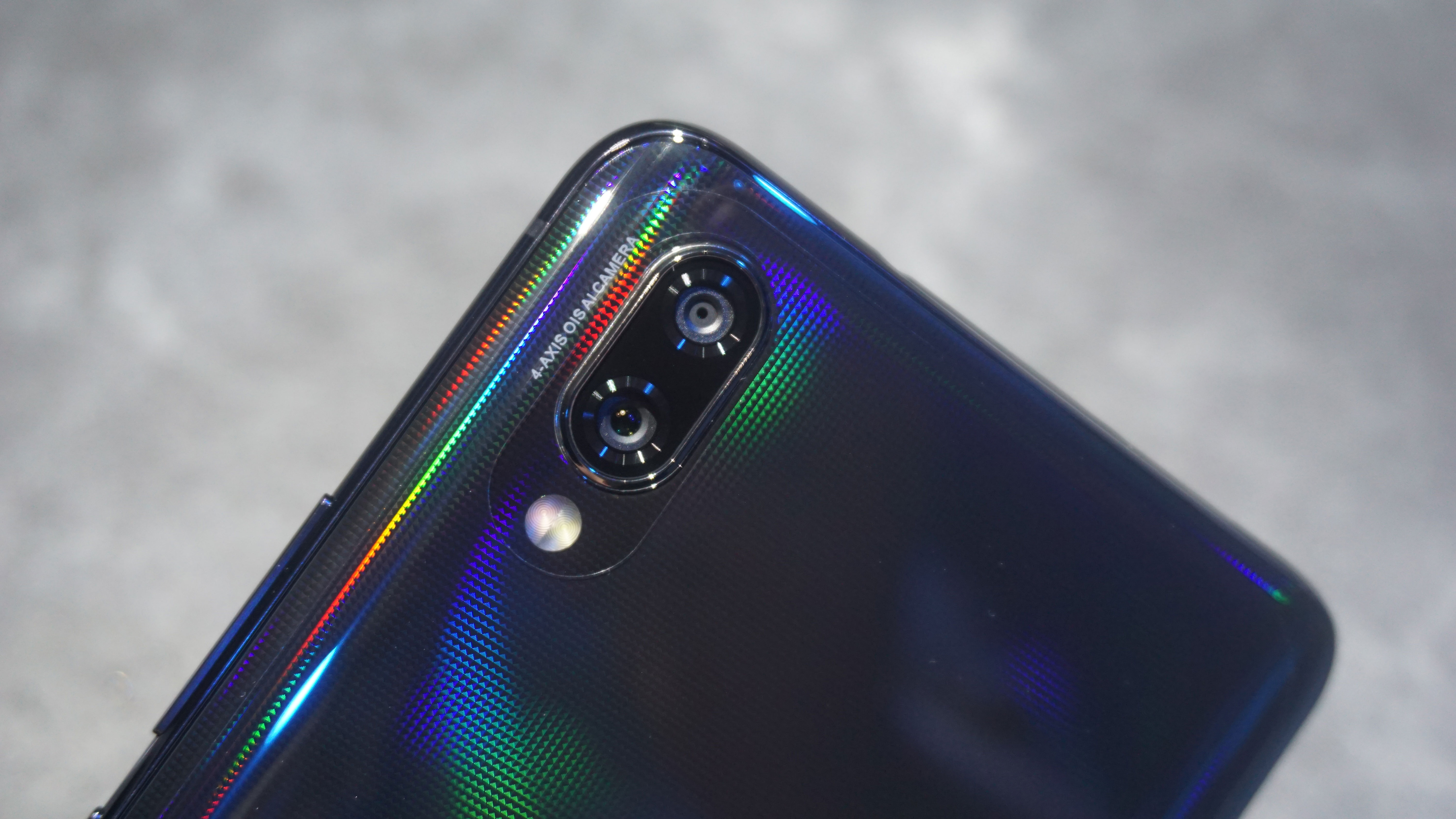
On the back of the device there's a dual-lens camera that uses one 12MP lens and another 5MP one. The 12MP lens has an aperture of f/1.8, while the 5MP sensor is f/2.4. So far Vivo hasn’t shared details on what each of the sensors does, so we’ll update this review with more once we know.
There are camera AI features here like on the Huawei range of products and some other devices, meaning the camera will optimize its settings to take what it believes to be the best shot when you’re shooting particular objects.
Vivo has packed in loads of other features here too including a beauty mode, panoramas and artificial intelligence filters that will work in a similar way to Snapchat.

Early verdict
The Vivo Nex is unmistakably an exciting phone that comes packed with innovative features and gives an alternative to the notch design for those who are desperate to own a bezel-less phone.
These new technologies may be embraced over the next few years by companies around the world, and we just hope the Vivo Nex is deemed big enough to be available all around the world as soon as possible.
James is the Editor-in-Chief at Android Police. Previously, he was Senior Phones Editor for TechRadar, and he has covered smartphones and the mobile space for the best part of a decade bringing you news on all the big announcements from top manufacturers making mobile phones and other portable gadgets. James is often testing out and reviewing the latest and greatest mobile phones, smartwatches, tablets, virtual reality headsets, fitness trackers and more. He once fell over.
What is a hands on review?
Hands on reviews' are a journalist's first impressions of a piece of kit based on spending some time with it. It may be just a few moments, or a few hours. The important thing is we have been able to play with it ourselves and can give you some sense of what it's like to use, even if it's only an embryonic view. For more information, see TechRadar's Reviews Guarantee.
